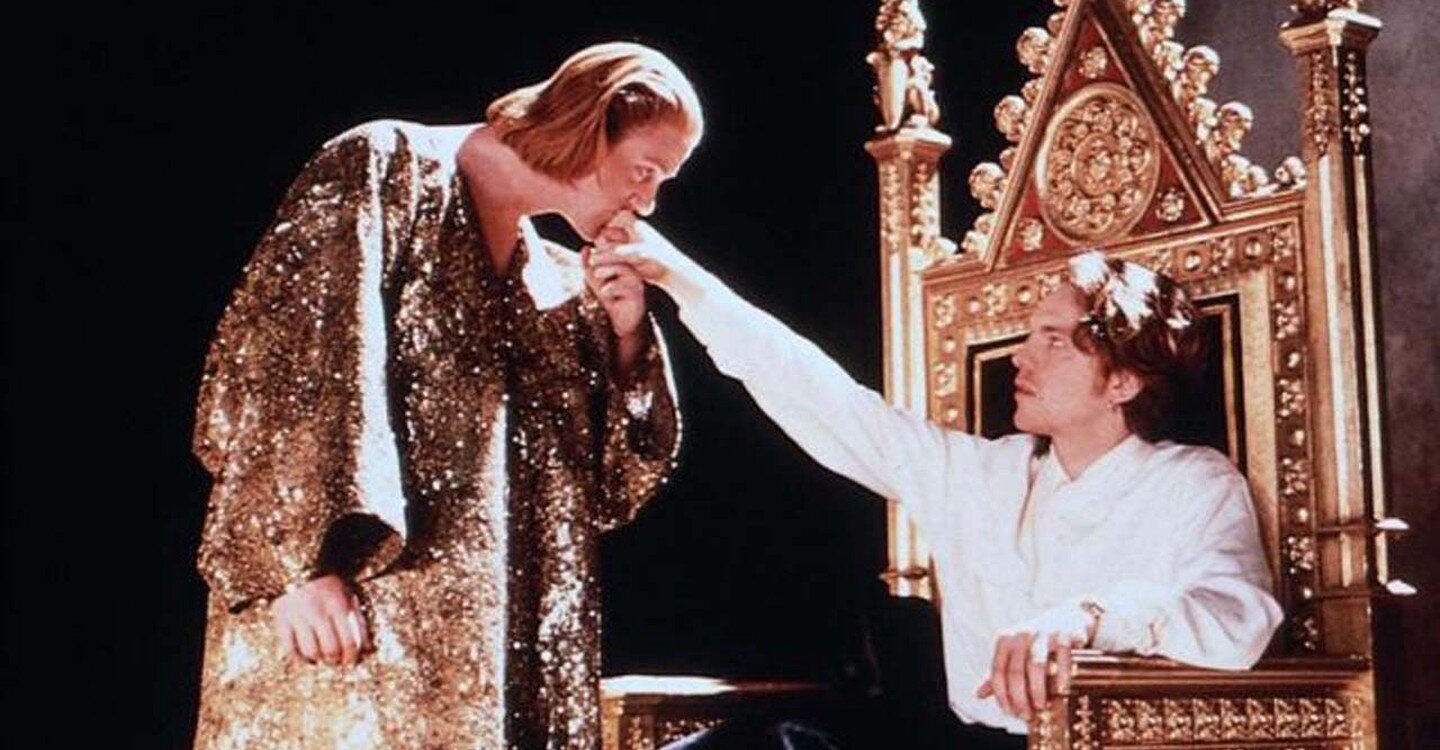Out on the Screen
Utne Reader
May – June 1992
Edward II
Gay movies make a splash in the mainstream
The new visibility of gays and lesbians in the media prompts a debate: What’s the “best” image of gay and lesbian life? An unprecedented number of films by and about gay men and lesbians hit the silver screen in 1991, including major hits such as My Own Private Idaho, which portrayed Portland street hustlers, and Paris Is Burning, a low-budget documentary about gay men “voguing” at Harlem drag balls.
This financial success came not just from big box office business in the relatively prosperous gay “ghettos” of North America but also from a crossover crowd of heterosexual moviegoers. The fact that frankly gay films have proven themselves to be economically viable is certain to spark further interest from an industry so often obsessed with the bottom line.
Film distributors expressed their confidence in gay cinema at the 1992 Sundance Film Festival in Park City, Utah, where four new feature films by gay directors played to packed houses. Two of these, Swoon (an examination of the infamous 1920s gay murderers Nathan Leopold Jr. and Richard Loeb) and Edward II (a look at the “queer” medieval king of England), were picked up by Fine Line Features, the distributor of My Own Private Idaho, which guarantees them fairly wide releases. Industry insiders say that the producers of two others, The Living End (a Thelma and Louise-style story of two HIV-positive men on the lam), and The Hours and Times (which examines the ambiguous relationship between John Lennon and Beatles manager Brian Epstein) are being wooed by a number of distribution companies.
This rise of gay cinema comes as no surprise to many in the cultural community. In her Sundance Film Festival 92 catalog entry (“The Gay Nineties,” Jan. 1992), cultural critic B. Ruby Rich writes that “a gay and lesbian cinema has built up over the years, enriched by a number of art-film traditions, celebrated by a network of community-specific festivals worldwide, fed by the stardom of directors from Fassbinder to Almodovar.” More recently, AIDS issues have galvanized many of today’s filmmakers, who joined in the protests against rising death counts and government inaction, and who continue to draw inspiration from their political involvement.
Although pleased by the films’ increased acceptance by mainstream audiences, gay men and lesbians are divided over what topics should be presented, and how gay issues and characters should be portrayed. Some believe that gay and lesbian filmmakers should focus only on narrowly defined “gay” themes. For example, the fact that AIDS rarely appears as a central theme of gay cinema disturbs some critics. Derek Jarman, director of Edward II, explains in the film journal Cineaste (Dec. 1991) that “a lot of people ask me why I don’t make a more ‘gay film,’ for example, about the AIDS crisis. The answer is I’m making films and I’ve been quite open about being HIV positive now for four years and I’m always talking about it... . I wouldn’t say I’m an [AIDS] activist particularly. Some people might think I am by just doing what I do.”
Other gay activists encourage films that show positive images of gay and lesbian characters in a form easily digestible by heterosexual audiences. They believe that portraying gay men and lesbians as unsavory characters may contribute to already increasing homophobia and anti-gay violence.
Most gay filmmakers occupy the other side of the debate, which claims that gay artists should tell whatever stories interest them—even if these stories contain deplorable gay characters. In the Canadian gay arts journal Out! (Feb. 1992), Swoon director Tom Kalin defends his choice to make a movie about two gay men who murdered a child, saying that those who call for censoring “bad” images of gay men and lesbians borrow from the anti-homosexual arguments of Sen. Jesse Helms: “The notion that representations can recruit must be interrupted. Helms uses it to say that if I’m exposed to [controversial photographer] Robert J. Mapplethorpe’s pictures, I’m going to turn into a pedophile. Gay people use it when discussing a film like Basic Instinct [which includes a lesbian serial killer]. As reprehensible as its representation of a lesbian may be, projecting the film is unlikely to provoke anti-gay violence.”
Some observers also criticize the gay male sensibilities that permeate much of the new film boomlet, with far fewer women making films as lesbians or with lesbian content. The only lesbian director featured in the current crop is Jennie Livingston, whose Paris Is Burning is about gay men. But as Rich writes in the Sundance catalog, “In the 90s the place to look for lesbian sensibilities, for the fusion of style and subject, is not in the world of cinema at all, but in video.” Lesbian video artists such as 18-year-old Sadie Benning have become gallery favorites. It remains to be seen whether these videomakers will move into cinema or will prefer to remain in video, building up the medium as a challenge to the expensive, male-dominated world of film. Even amid all these debates, it is an exciting time for gay and lesbian cinema. The 1990s may turn out to be a very queer decade at the movies indeed.
—Noah Cowan

